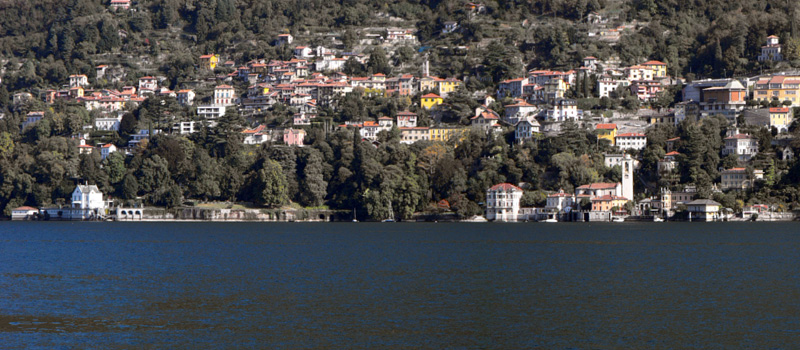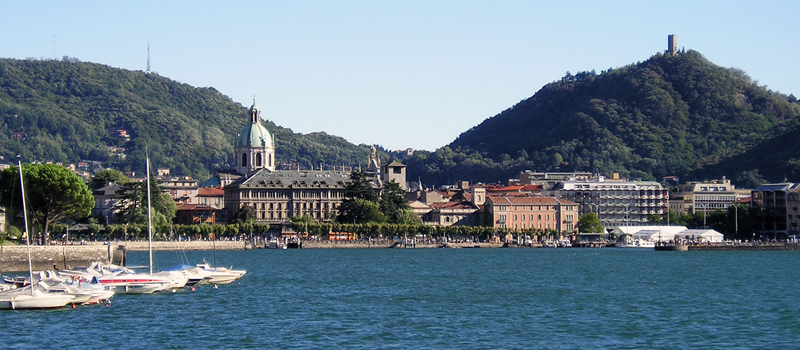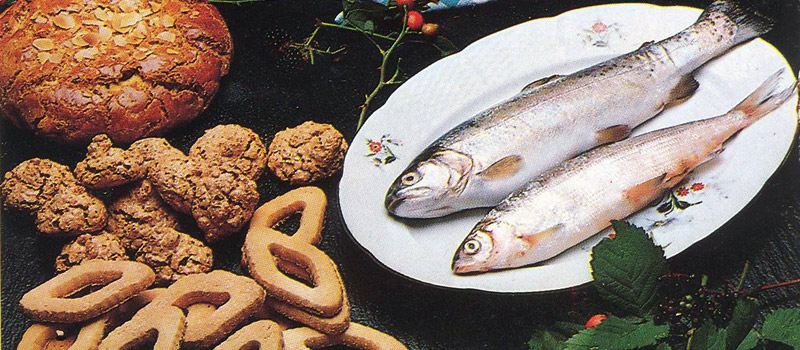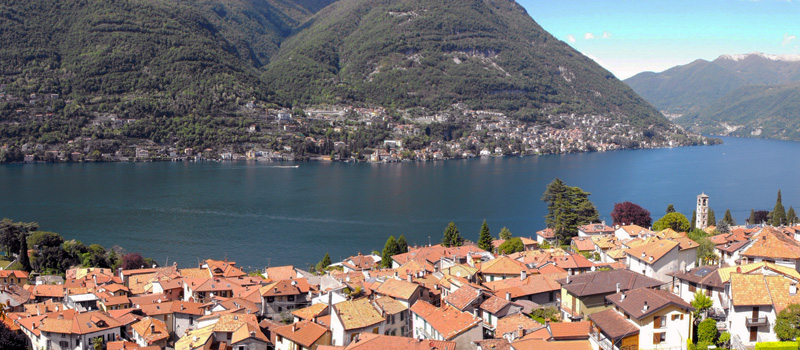
Blevio stands on the eastern shore of Lake Como, enveloped by the towns of Como and Torno. On the opposite shore it mirrors itself in the towns Cernobbio and Moltrasio. The town of Blevio is made up of seven hamlets, spread across the slopes of Monte Boletto to the shores of Lake Como. The small hamlets, also named the "seven cities" are: Girola, Mezzovico, Meggianico, Capovico, Cazzanore, Sorto and Sopravilla. The town’s origins are very ancient, some scholars date the initial inhabitation back to the Iron Age, nearly 3500 years ago. The first official document bearing the name Blevio dates back to 1084, a will and testament of Bishop of Como, Reginaldo.
For centuries Blevio has been residential, as the amazing villas spread across the territory testify. Among those prestigious residences we remember, la Pozzi today, Villa Troubetzkoy, the grand Mylius-Cademartori remodeled by architect Balzaretto in 1843, and the 18th-century Calvi-Talbot. The monumental villa De Riva, la Belvedere also called Malpensata which hosted Alessandro Manzoni, and Villa Ferranti or Roccabruna which belonged to opera singer Giuditta Pasta, and today transformed into an exclusive resort. The connection between soprano Giuditta Pasta and composer Vincenzo Bellini is famous. The amazing musician, who nurtured a sort of veneration for the singer, wrote "Norma" and "Sonnambula" offering to entrust her with the starring role.
Along the road that leads a from the hamlet of Mezzovico climbing to the Chapel of the Madonna, we come across the famous rock, Pietra Nairola (Nairola Stone). It is an enormous granite boulder, which rests horizontally on the mountain’s ledge. On the lakeshore stands the ancient church of Saints Gordian and Epimaco, built in the 15th century and completely rebuilt in 1762. In 1967 the new parish church, designed by Carlo Lucini was inaugurated, the building is located in downtown Blevio. Inside we can admire works from the ancient church, paintings attributed to Nuvolone in the 17th century and the Lombardy school of the 16th century.

Como is the city which gives the name to the entire lake, arriving by train to the Como Lago station, you can easily admire all of the marvels of the city going by foot. We recommend a visit to Brunate and Volta Temple.
Como
Dried Shad (Agone), called Missoltini or Missultin, were at one time a precious food for inhabitants of Lake Como, the particular processing allowed them to be conserved for more than a year, excellent traditional Lake Como cuisine.
Lario Cuisine
Torno is situated upon a headland, from where it looks down over the south-western end of lake Como. Traces of pre-Roman settlements have been found in the area, as evidenced by the discovery of Massi Avelli to Piazzaga.
Torno